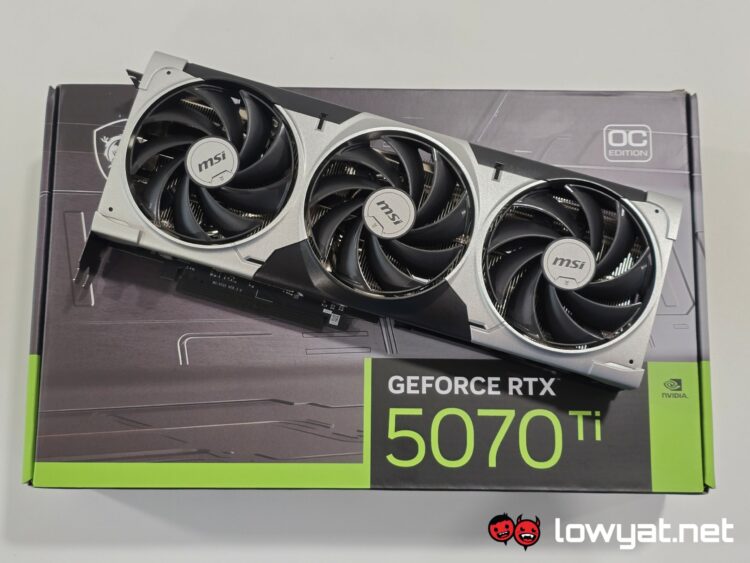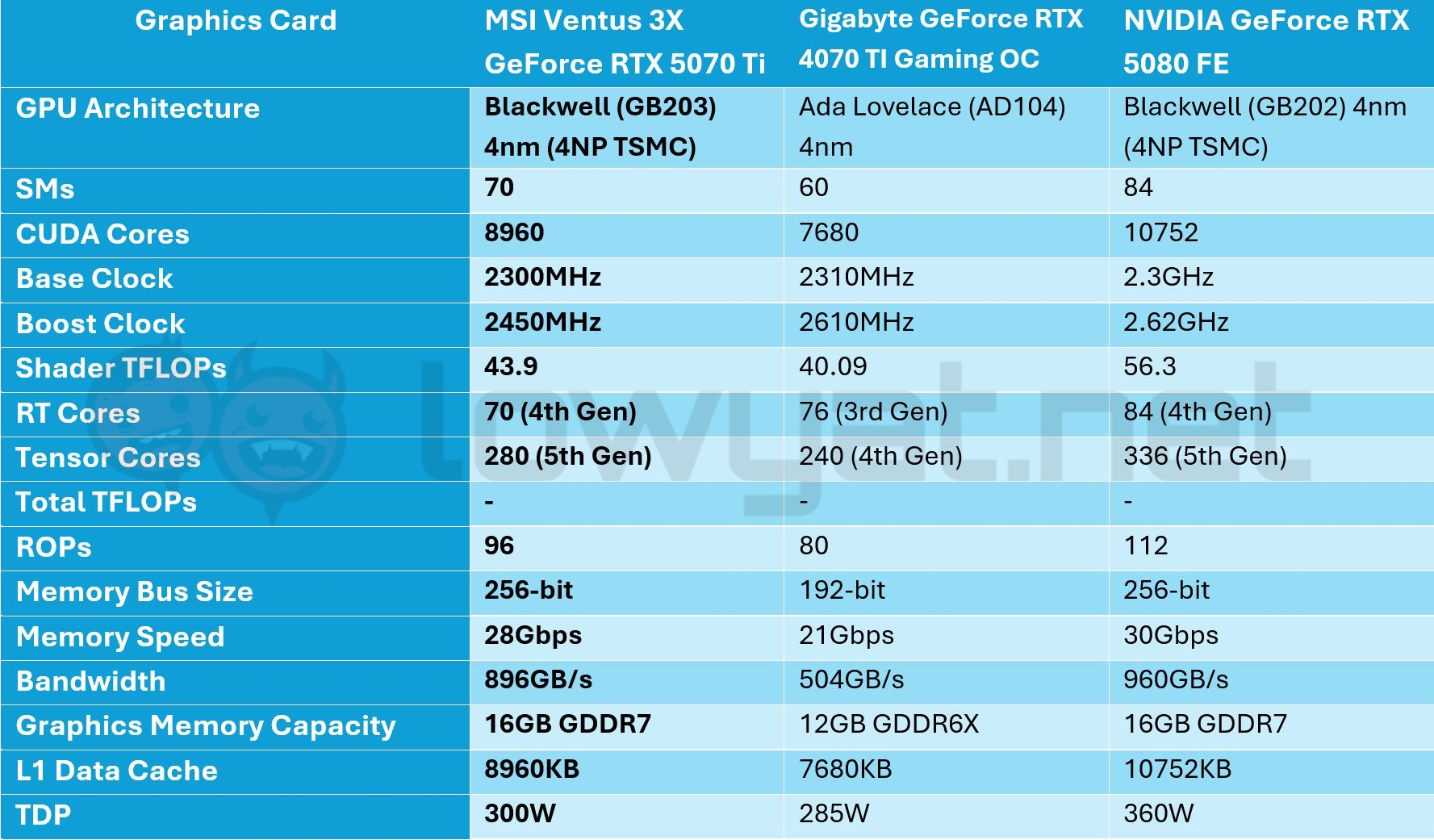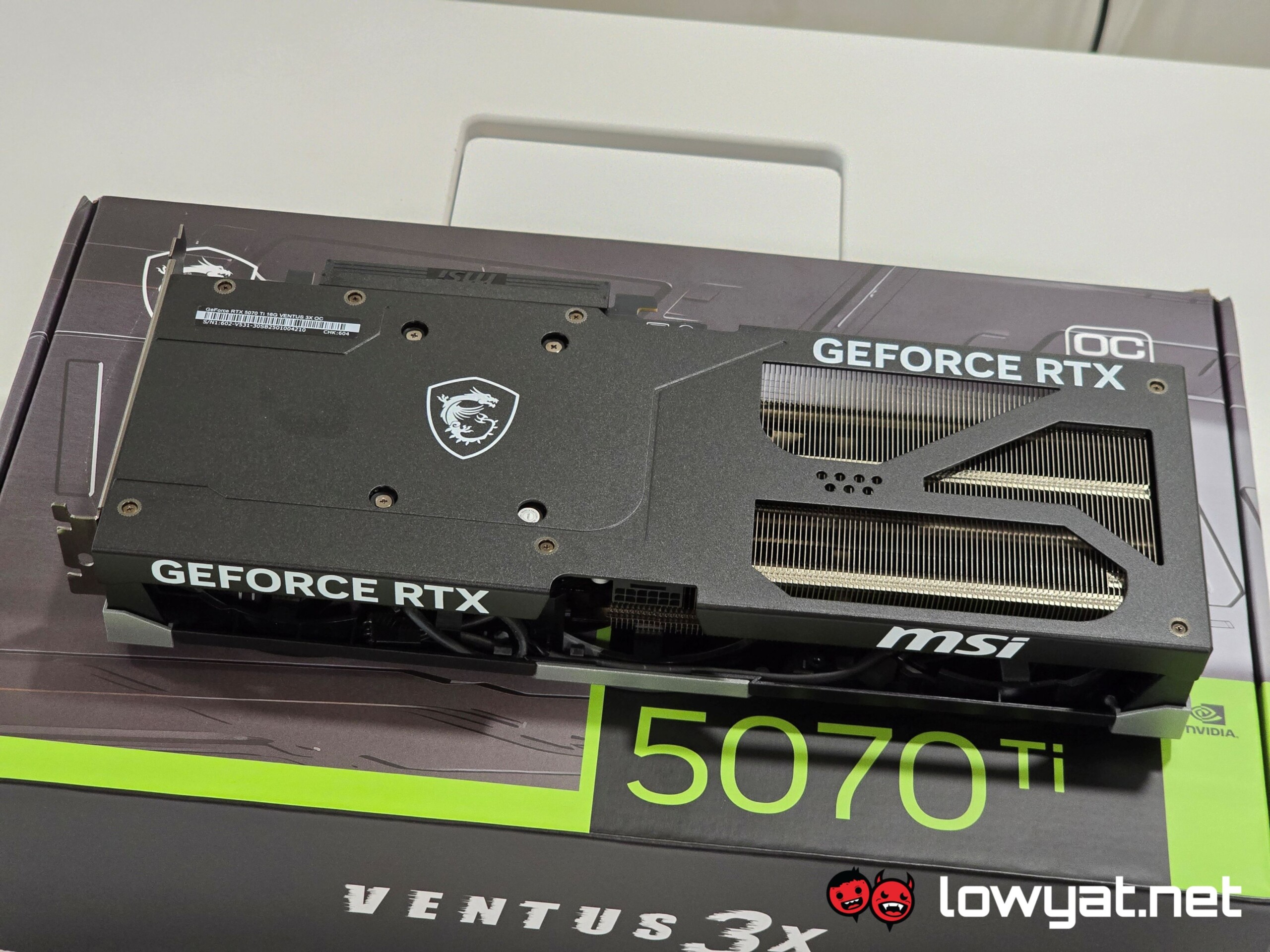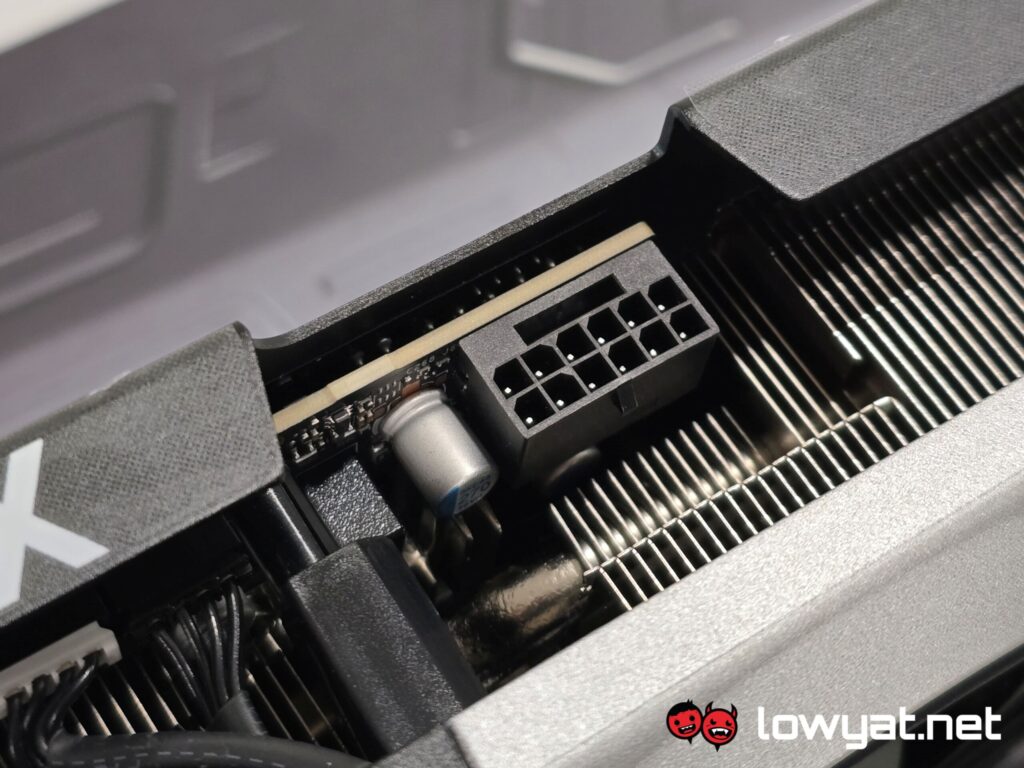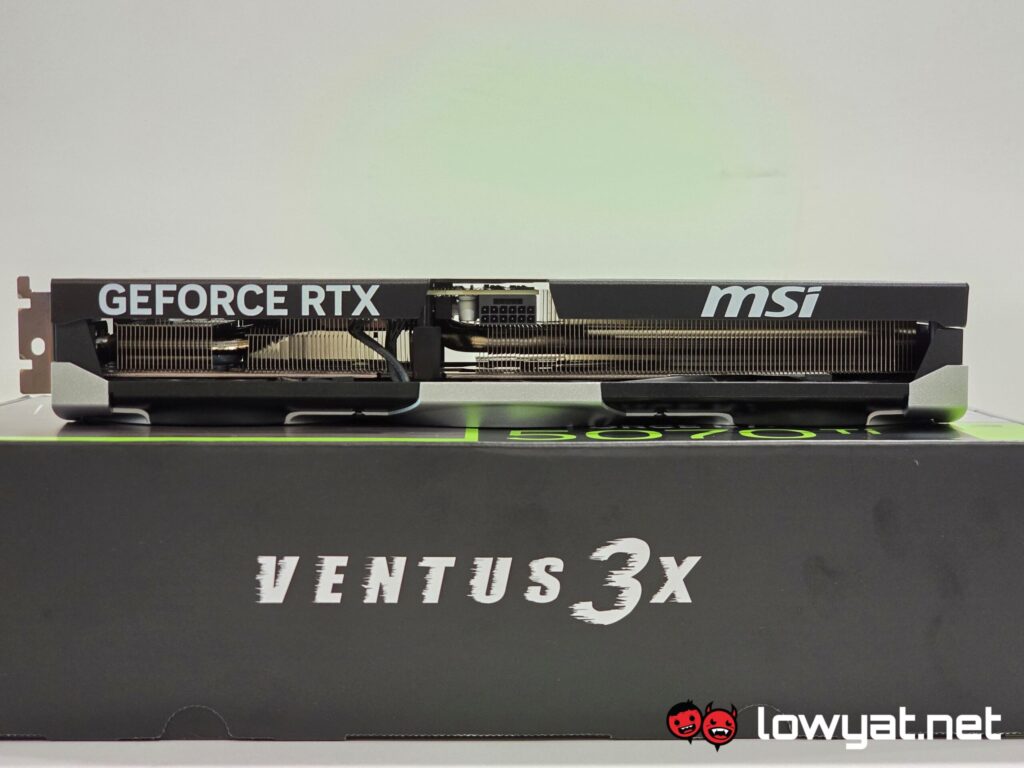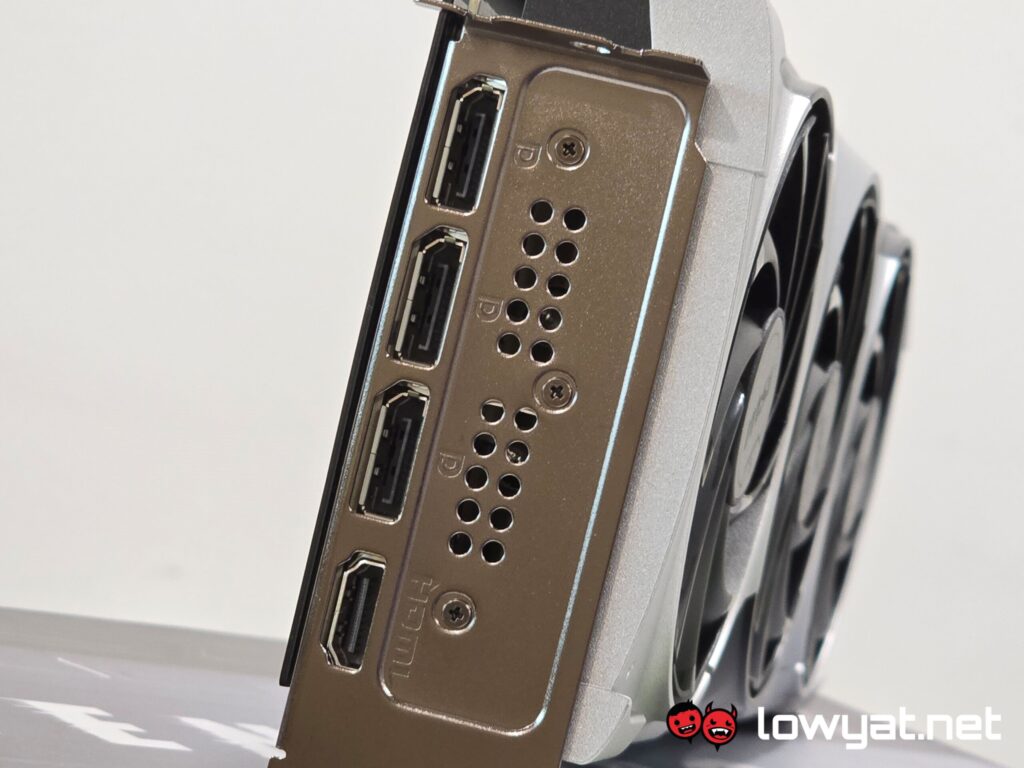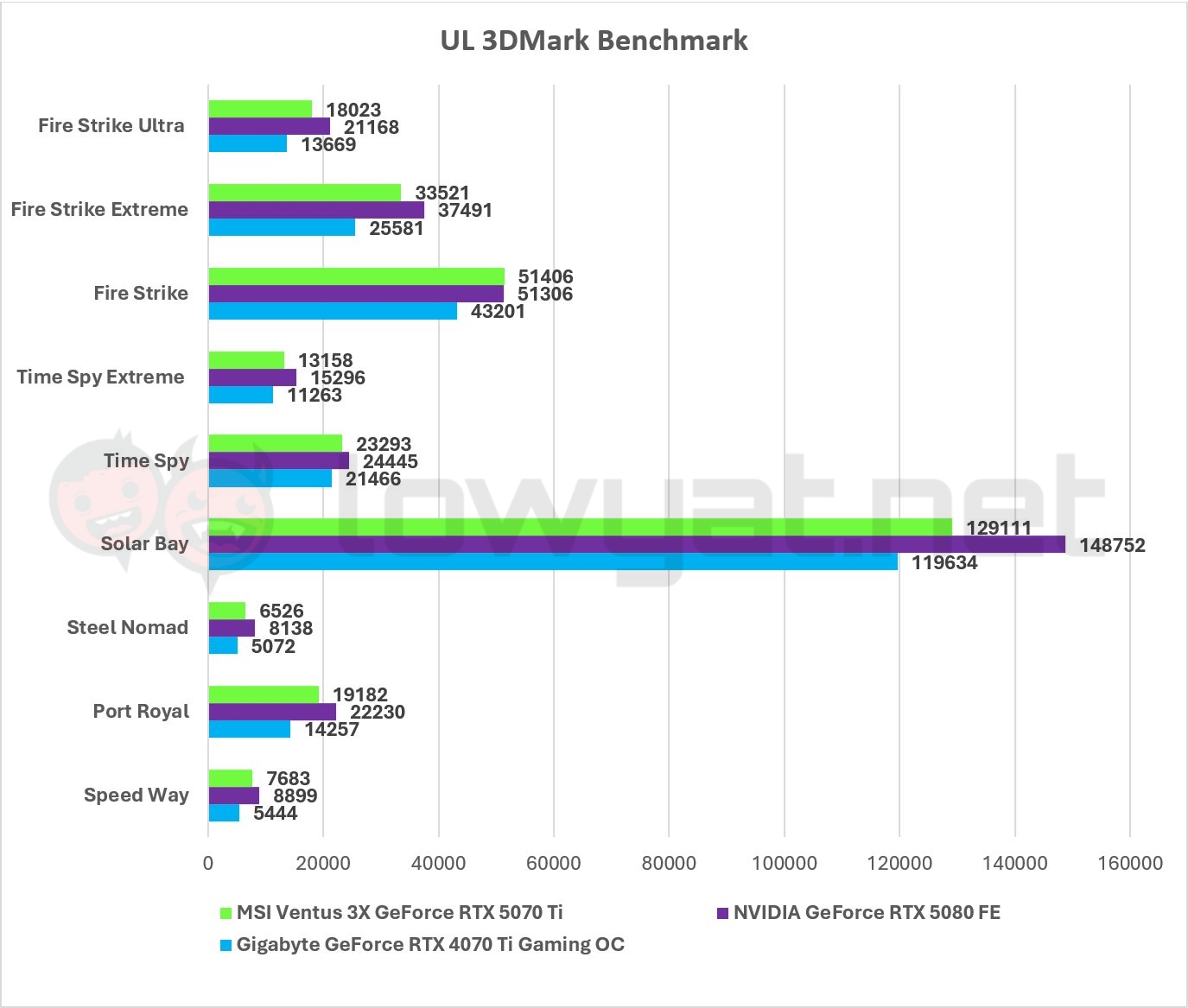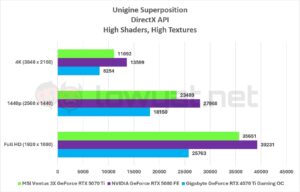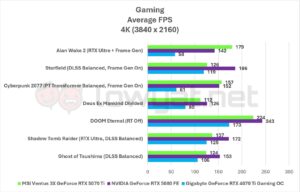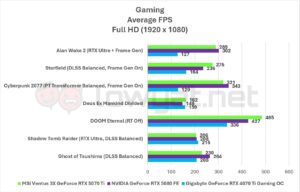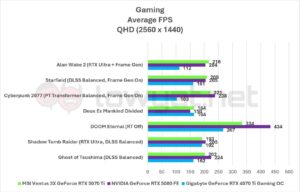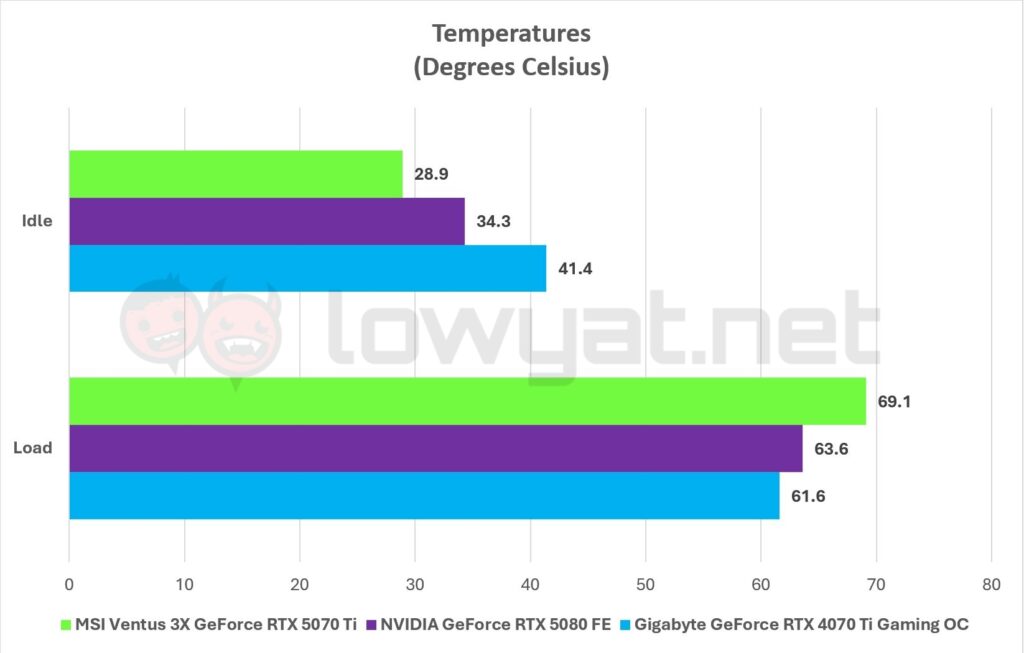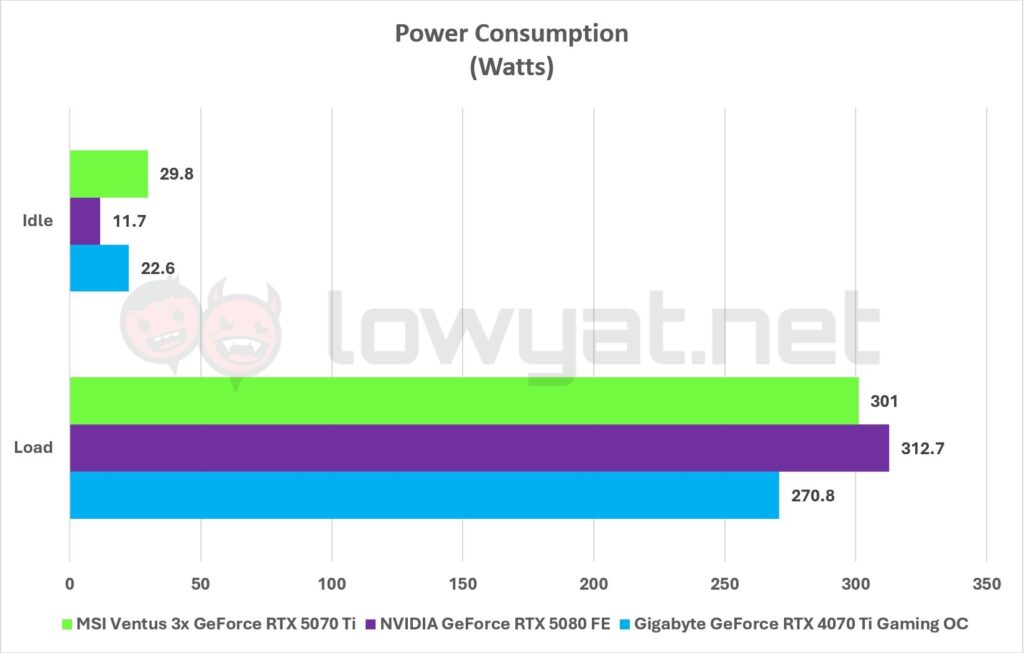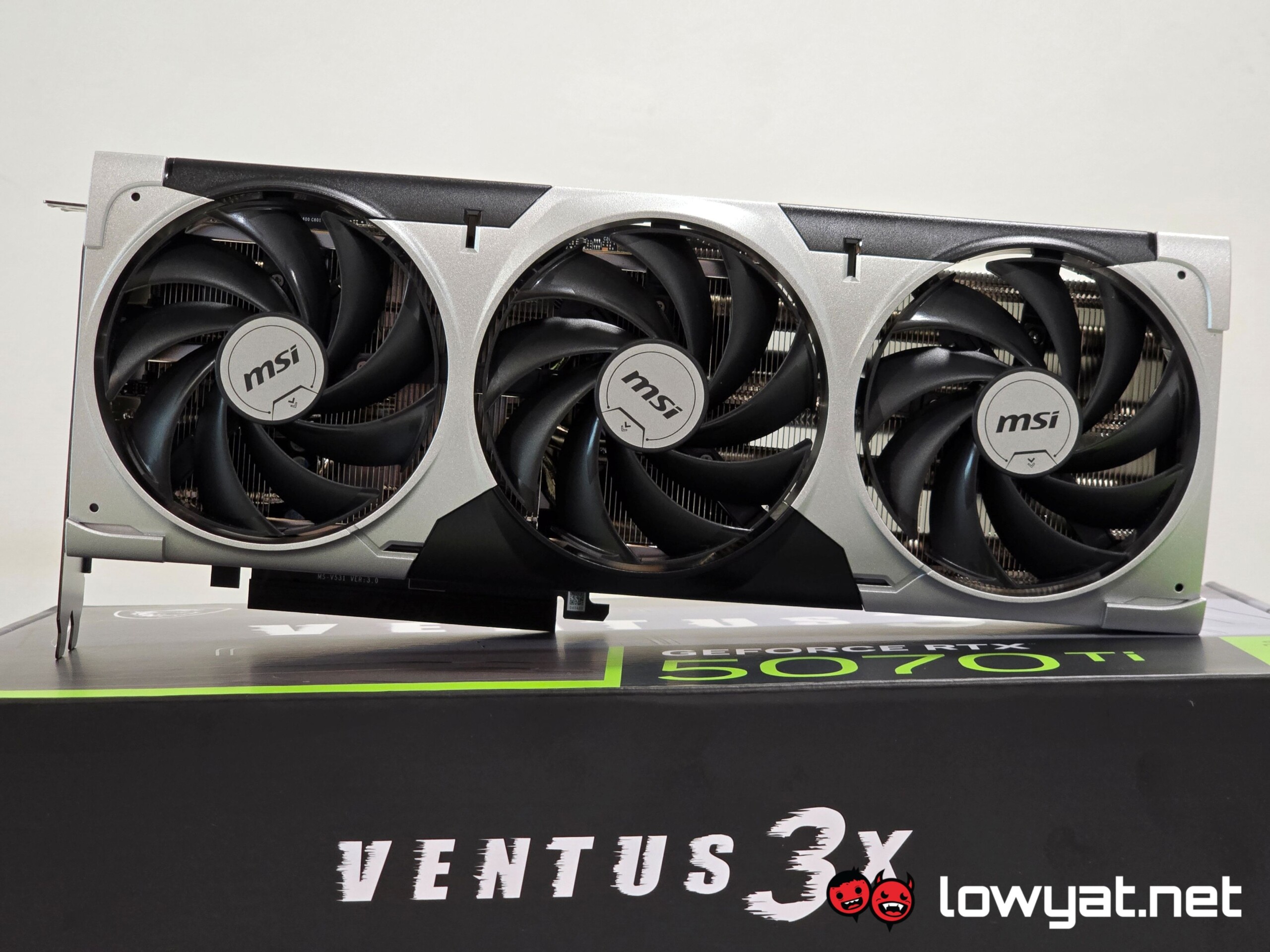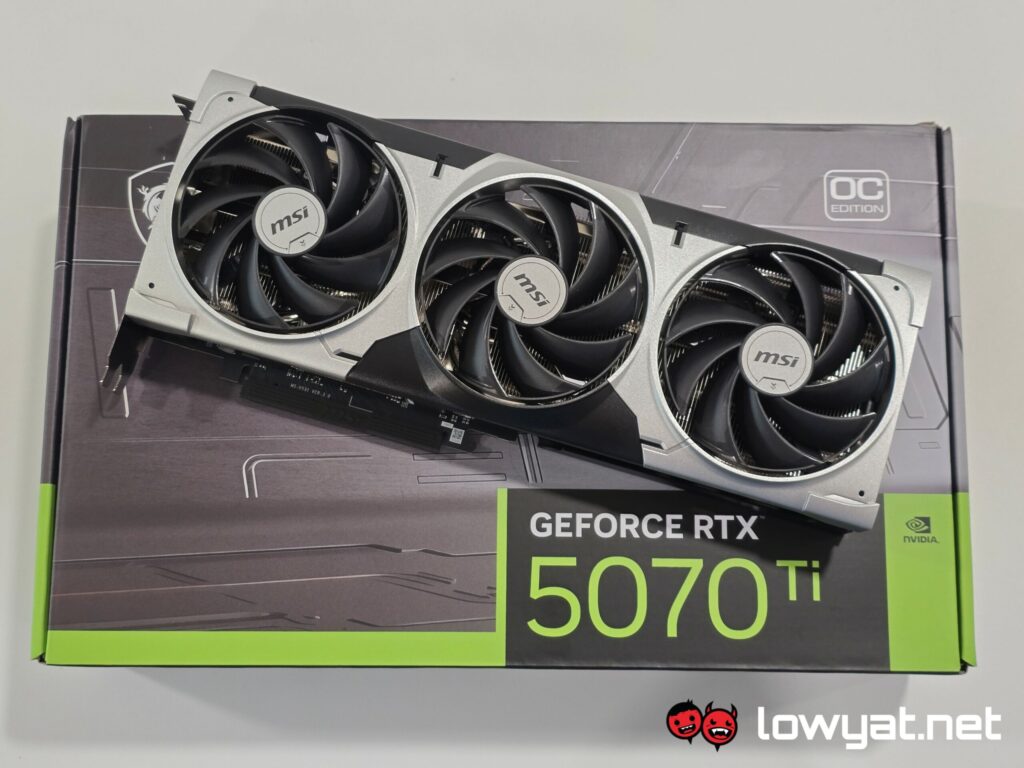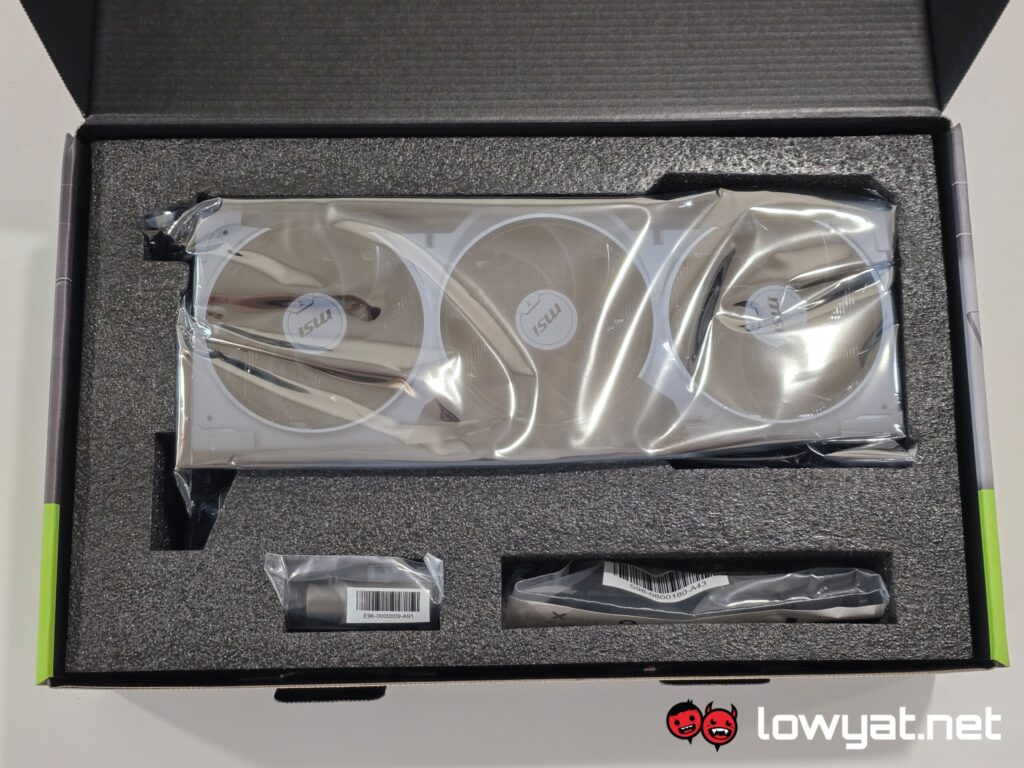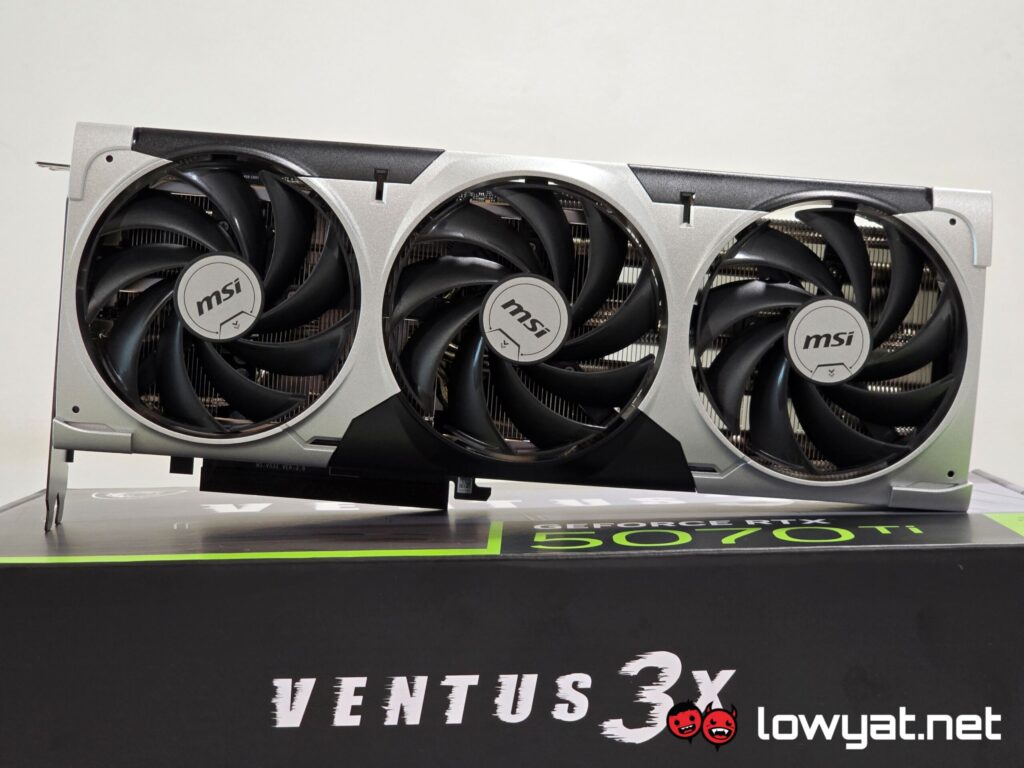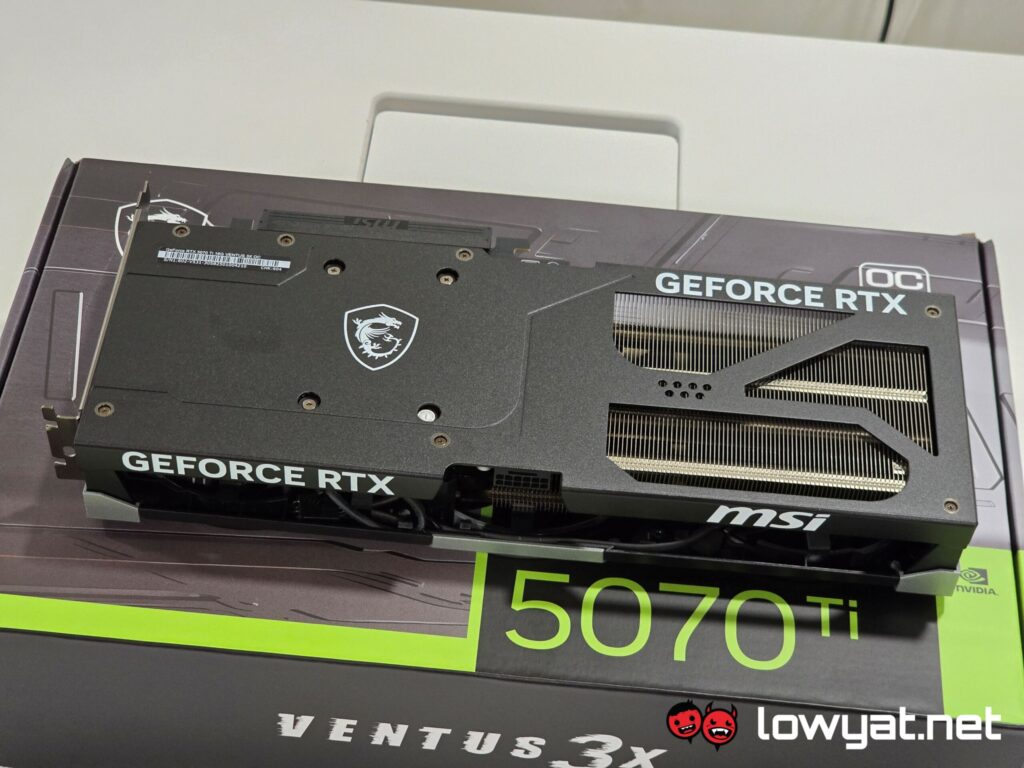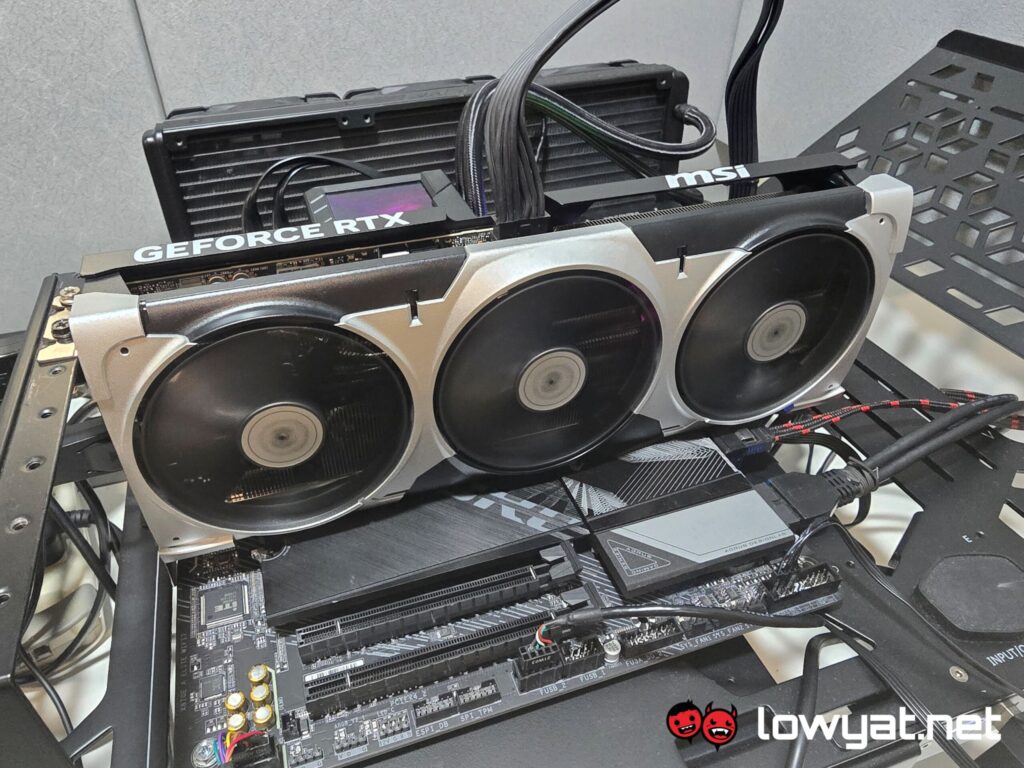So, review of NVIDIA’s GeForce RTX 5070 Ti are officially popping up, with this review being one of them. The card is the third child of the four Blackwell consumer GPUs announced at CES 2025, and the only one that doesn’t get the privilege of the Founders Edition mantle.
As the direct successor to the RTX 4070 Ti, you’ll see in the benchmarks section that the card does not disappoint. However, its comparability to the RTX 5080 raises some “minor” flags over the ringgit-to-performance ratio.
Specifications
Design
As I said, a Founders Edition of the RTX 5070 Ti doesn’t exist, NVIDIA has left the GPU to the mercy of its AIB partner and in this case, we’ve been given the variant that is MSI’s Ventus 3X SKU. At the time of this publication, it’s even been suggested that this model is one of the cheapest SKUs on the market, which is saying something.
Rather than adopt a two-fan cooling solution like NVIDIA’s current iteration of the FE design, MSI is sticking with tried and tested triple-fan design, complete with TORX 4.0 fans and the usual fare of metal attached to the rear for added rigidity and that cooling. Unlike the RTX 50 Series FE cards, the input ports aren’t inverted and stay in the same orientation. Simply put, the cooling solution is a carbon copy of the design used with MSI’s Ventus 3X RTX 4070 Ti.
What does irk me a little is why NVIDIA’s AIB partners, let alone MSI, wouldn’t adopt the angled 12VHPWR power connector design. Instead what we have here is a power port that doesn’t seem to be installed far in enough, that the cable will not be literally pressed by, say, the side panel, tempered glass or otherwise.
Internally, the card is almost identical to the RTX 5080. That includes the same 16GB GDDR7, PCIe Gen5 access, same memory bus, a slightly lower memory bandwidth and slower memory speeds. But slightly lower power consumption.
Testbench
For comparison, I will obviously be comparing the RTX 5070 Ti not just to its direct predecessor, the RTX 4070 Ti and more specifically, the Gigabyte variant that I reviewed two years back, but also to the GeForce RTX 5080 that I recently reviewed. Oh, and the CPU being used in the testbed is the Ryzen 9 9950X.
NVIDIA, I know you designed Blackwell to be a monster when it comes to AI performance but for now, I’m simply going to focus on the gaming aspect of the card.
Benchmarks, Temperatures, And Power Consumption
Now, if we’re doing a direct comparison between the RTX 5070 Ti and RTX 4070 Ti, it’s plain to see which GPU is the domineering force: it’s absolute, beyond a shadow of a doubt. Be it synthetically or in gaming, the prowess of Blackwell is clear, as is the extra 4GB graphics memory and faster GDDR7 memory modules. And that includes the former’s access to Blackwell-exclusive DLSS 4 and Multiframe Generation.
But when I turned my attention towards the performance between the RTX 5070 Ti and the RTX 5080 FE, that’s when things get interesting.
Here’s the thing: on the synthetic side of things, the RTX 5070 Ti is clearly less potent. That I get, understand even. But what I don’t understand is how the card somehow manages to beat or match the RTX 5080 in a handful of titles, albeit inconsistently across the three traditional resolutions.
Seriously, take a look at the performance in 4K. In Alan Wake 2, the average frames of the RTX 5070 Ti outperform the RTX 5080 by miles, while in Cyberpunk 2077, running the game with Multiframe Generation cranked up puts it right up behind NVIDIA’s second most powerful Blackwell GPU.
At Full HD, the RTX 5070 Ti wins the fight in Doom Eternal, churning out a near 490 fps versus the RTX 5080’s 427 fps. The point I’m trying to make here is that, for US$250 (~RM1,110) less, this card performs no better or worse than the latter, and I’m chalking it up to MSI’s Ventus 3X cooling solution and its own tweaking the GPU working its magic here.
Conclusion
The MSI Ventus 3X RTX 5070 Ti is a card I feel is a victim of Imposter syndrome. On paper, the card and its specifications are a near-carbon copy of the RTX 5080 and even its gaming performance is virtually on par with its more powerful sibling, yet for some reason is being sold at a more affordable price tag. Not that there is anything wrong with that, of course, but honestly NVIDIA, it can’t be denied that this is starting to become a little confusing. Especially, with your target market.
Where the RTX 5080 was designed for high-end, enthusiast gamers, I think that the RTX 5070 Ti errs a little closer to the side of mainstream 4K gaming. Which, if I’m being honest, might make this model the actual contender to the Radeon RX 9070 XT when it launches next month.
As mentioned, it was hinted to us that the MSI Ventus 3X GeForce RTX 5070 Ti was going to be one of the cheaper models that’ll be coming to Malaysia, with a price tag closer to its official MSRP of US$749 (~RM3,321).
Photography by John Law.
Follow us on Instagram, Facebook, Twitter or Telegram for more updates and breaking news.


